Courtly love is a medieval concept that romanticizes an idealized and often unattainable form of love, characterized by devotion, chivalry, and poetic expressions of longing.
Imagine yourself transported to the enchanting world of medieval Europe, specifically the 12th century in Southern France. It was a time when the fascinating concept of courtly love began to weave its spell, emanating from the illustrious courts of Eleanor of Aquitaine and her daughter, Mary de Champagne.
Though it might’ve started in the middle ages, the concept of courtly love has inspired endless adventures and poetic literature. There’s more to it than meets the eye.
Table of Contents
What is Courtly Love?
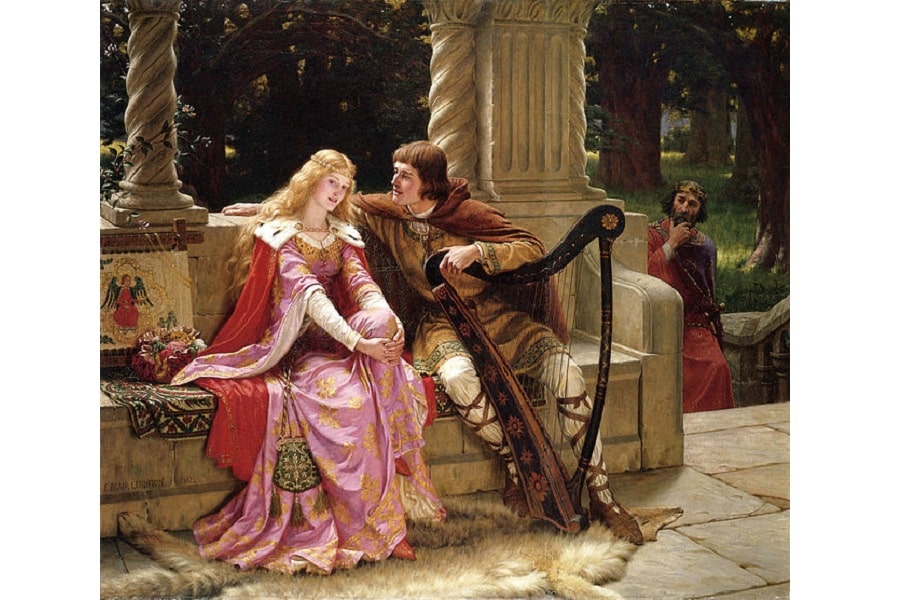
Courtly love, also known as “amour courtois,” is a complex and often idealized form of love prevalent in the literature and culture of the High Middle Ages. Originating in the 12th century, it typically involves the secret and non-physical love between a knight or courtier and a woman of higher social status, often married. Love is often unconsummated, a source of unending desire and spiritual elevation.
However, within the realm of courtly love poetry, a remarkable metamorphosis took place. Women, since ancient times in general, emerged as captivating figures, distinct and whole. They were idealized beings, often draped in the unattainable allure of marriage or other binding ties. As such, they became the sole focus of a knight’s unwavering devotion, service, and selflessness.
READ MORE: The Life of Women in Ancient Greece
Now, you may wonder, what made courtly love so extraordinary?
It was a highly idealized form of love associated with the nobility and chivalry of the time. The origins of courtly love can be traced back to the troubadour poetry and literature of Southern France.
These troubadours, or poet-musicians, created songs and poems that celebrated the experience of romantic love outside the bounds of marriage. Courtly love was often portrayed as a passionate and consuming affair between a knight and a noblewoman married to another man.
But just like any other form of love, it has specific rules of conduct.
Admiration of the Lady:
The knight would direct his love and devotion towards a noblewoman, whom he viewed as the embodiment of perfection and beauty. The lady was often portrayed as unattainable, inspiring, and motivating the knight.
Obedience and Humility:
The knight would be a humble servant to his lady, demonstrating loyalty, compliance, and selflessness. He would often perform acts of service and chivalry in her honor.
Secrecy and Discretion:
Courtly love was often conducted in secret and required discretion due to the social and marital constraints of the time. The lovers exchanged messages and tokens of affection while maintaining a respectful distance.
Courtly Gestures and Etiquette:
There were specific rules and rituals associated with courtly love. These included formal declarations of love, exchange of love letters and gifts, courtly dances, and engaging in intellectual and poetic discourse.
Unrequited Love:
Courtly love often involved unrequited or unconsummated feelings, as the focus was more on the mental connection than sexual. The pain and longing caused by unfulfilled love were integral to the experience.
Courtly love was not intended to lead to marriage but existed as an idealized form of love. It played a significant role in shaping medieval literature, art, and culture, and its influence extended beyond Europe, inspiring similar concepts of romance in different societies.
So, it was more about emotional and spiritual yearning rather than physical intimacy.
Where Did Courtly Love Originate From?
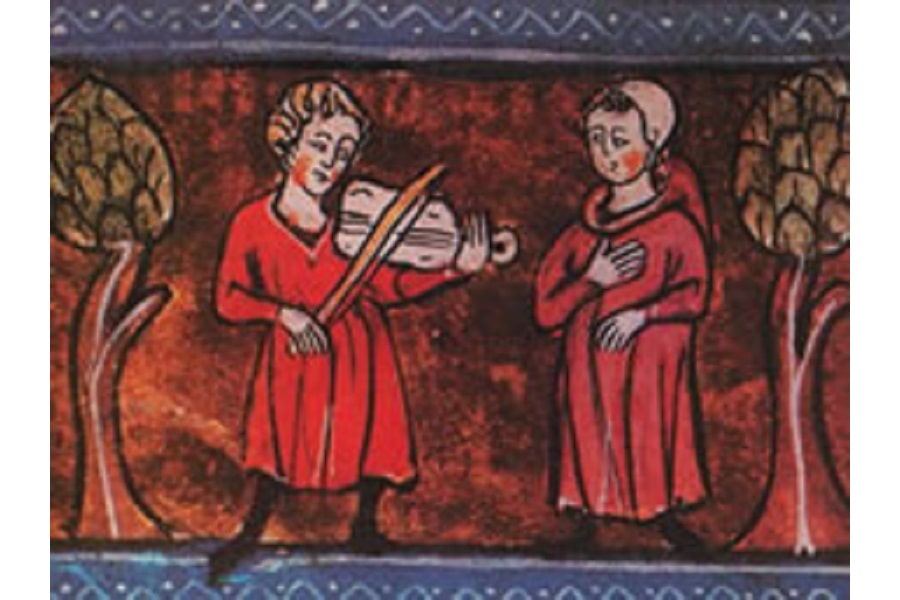
Courtly love originated in the medieval period, particularly in the noble courts of Western Europe during the 12th century. It was a literary and cultural movement that idealized love and celebrated the intense emotions experienced by knights and noblewomen. However, it’s important to note that courtly love was a complex and multifaceted concept, and its origins can be traced back to various influences and cultural developments of the time.
The troubadours, poet-musicians from the Occitan region of southern France, played a significant role in popularising and shaping the concept of courtly love. They composed songs and poetry that praised the virtues of a noble and chaste love, often directed towards a married or unattainable lady. The troubadours’ influence spread throughout Europe, particularly in Provence, Catalonia, and Northern Italy.
While courtly love was strongly associated with the troubadours and the courts of Provence, its ideas and themes can also be found in earlier literary traditions. Elements of courtly love can be seen in the works of Ovid, a Roman poet of the classical period, who wrote about the idealized and passionate love between gods and mortals.
READ MORE: Roman Gods and Goddesses: The Names and Stories of 29 Ancient Roman Gods
Additionally, courtly love drew inspiration from the cultural exchange between Europe and the Islamic world during the medieval period. Arabic poetry, particularly the tradition of love poetry known as “ghazal,” profoundly influenced courtly love. The Islamic concept of passionate and forbidden love, known as “Ishq,” resonated with the ideals of courtly love.
Historically, courtly love originated in the noble courts of Western Europe during the medieval period, particularly in the 12th century. Its roots can be traced to the troubadours, their poetic tradition, and earlier influences from classical literature and Islamic poetry.
What are the Main Features and Ideals of Courtly Love?

Historical courtly love was characterized by ideals that set it apart from other forms of love and romance.
The Idealization of the Beloved:
Courtly love exalted the beloved to perfection, often portraying them as an object of admiration and reverence. The special was seen as the epitome of beauty, virtue, and grace. This idealization of the beloved is an accurate representation of courtly love.
Unattainability and Obstacles:
Courtly love often revolves around a love triangle, with the beloved being unattainable or already married to another. The lovers faced various obstacles that hindered their union, heightening the intensity and longing of their emotions. Therefore, the unattainability of the beloved was a common theme in courtly love.
Adoration and Devotion:
Courtly love emphasized the knight’s ardent admiration and devotion towards the beloved. The knight pledged to serve and honor the special, often engaging in chivalrous deeds to prove his loyalty.
Secrets and more secrets:
Courtly love had a code of conduct that required the lovers to maintain secrecy, displaying their affection discreetly. They adhered to strict rules of etiquette, such as sending messages through poetry or engaging in courtly rituals. Courtly love demanded discretion and adherence to social norms and practices.
The Art of Platonic Love:
Courtly love had a spiritual dimension, intertwining religious devotion with romantic love elements. It is believed to idealize unrequited love, valuing the intensity of desire and longing over consummation. As the love is more or less one-sided, there is, in truth, no significant difference between a platonic relationship and courtly love. The spiritual and platonic aspects of courtly love were strictly maintained, emphasizing the yearning for absolute silence and devotion over physical consummation.
What are the Four Rules of Courtly Love?
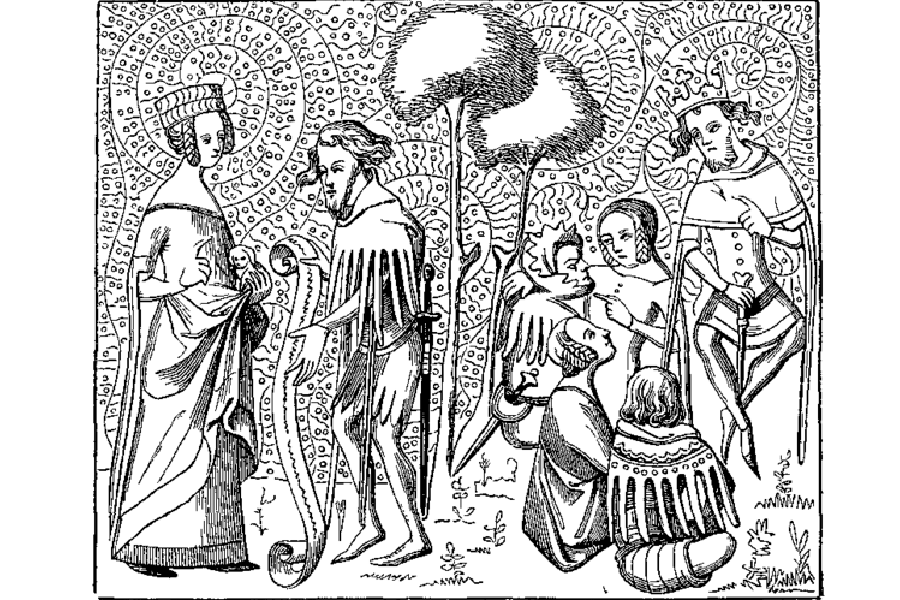
1) Marriage is no real excuse for not loving:
This principle challenges the notion that love is confined within the boundaries of marriage. It suggests that individuals can feel intense and passionate love for someone other than their spouse, emphasizing that marriage should not limit one’s ability to find love outside of it. This rule recognizes that love can transcend societal norms and expectations. However, this rule may raise controversies in a society slowly discovering and embracing the concept of an open or polyamorous relationship.
2) He who is not jealous cannot love:
This point connotes that jealousy is one of the most intense, powerful, and persisting emotions. Jealousy is the most straightforward way to prove devotion. Jealousy strengthens the commitment between partners. When expressed and addressed constructively, it fosters open discussions and deepens the emotional connection within the relationship. Love cannot exist in an individual who is incapable of embracing jealousy. Jealousy is, undoubtedly, a testament to love
3) Exclusive love for one person:
True love is singular and cannot be divided among multiple individuals. It emphasizes that when someone experiences true love, they devote their entire being to that person. This exclusivity implies that the intensity of love is concentrated on a single individual, and they become the center of the Lover’s universe.
4) Love’s dynamism:
True love is depicted as a dynamic force subject to change over time, and it is not a static or constant emotion. This rule suggests that love can grow and deepen with time or gradually diminish as individuals evolve. It acknowledges that the nature of love is not fixed but can undergo transformations as individuals and circumstances change.
Courtly Love in Historic Literary Pieces:
“Sir Gawain and the Green Knight” – In this medieval romance, Sir Gawain demonstrates courtly love as he encounters Lady Bertilak, his host’s wife. Despite her advances, Sir Gawain remains chaste and courteous, navigating the complex dynamics of courtly love in a tale filled with intrigue, temptation, and honor.
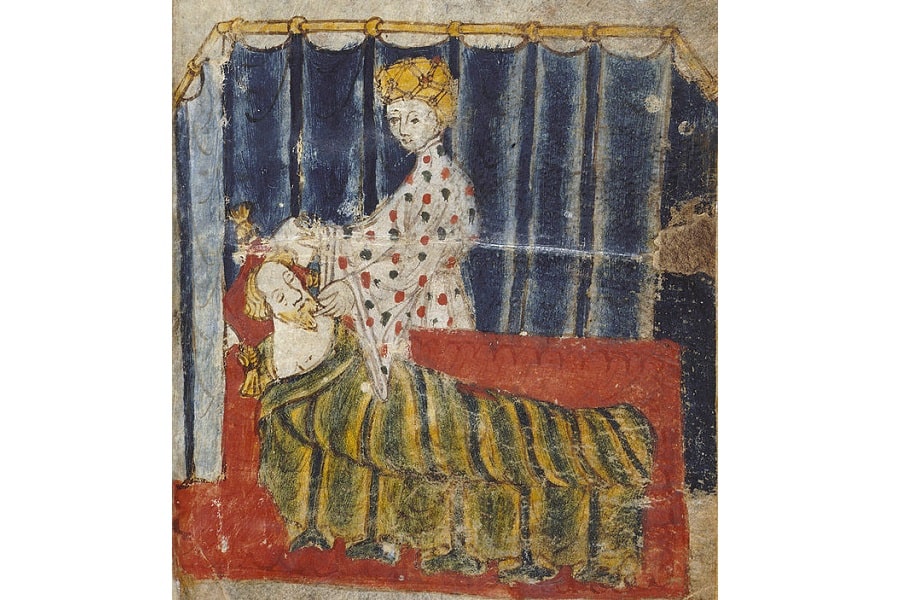
“Romeo and Juliet” – Shakespeare’s iconic tragedy is a quintessential example of courtly love. The passionate yet forbidden love between Romeo and Juliet epitomizes the intense devotion and longing characteristic of courtly love. Their secret meetings, poetic exchanges, and ultimate sacrifice for each other showcase the power and tragic consequences of pursuing a passion outside societal constraints.
“Tristan and Isolde” – This legendary tale depicts the forbidden love between Tristan, a knight, and Isolde, his uncle’s wife. Despite their circumstances, Tristan and Isolde experience an all-consuming passion that defies societal norms. Their story explores the complexities of courtly love, including loyalty, sacrifice, and the agony of unrequited desire.
Is Courtly Love One-Sided?
At the heart of courtly love lies the idea of the lover’s unrequited desire for the beloved.
The lover is consumed by an intense longing, which may be rooted in the special’s unattainable status, such as being of higher social rank or already married. This unrequited aspect amplifies the emotions, fueling the romantic tension and adding a sense of yearning to the relationship.
But why on Earth would individuals even willingly embrace such one-sided devotion?
Courtly love often served as a means of personal and spiritual growth. The lover aspired to refine their character, embodying the ideals of chivalry, loyalty, and self-sacrifice. The beloved, often representing an unattainable ideal, became an object of inspiration and a catalyst for the lover’s self-improvement. In this context, the one-sided nature of courtly love symbolizes the lover’s dedication and ability to rise above personal desires for an idealized form of love.
Medieval literature abounds with fascinating examples of courtly love, showcasing the depth and complexity of one-sided devotion. In “The Romance of the Rose,” the character of the lover ardently pursues the unattainable Rose, representing the beloved. The poem explores themes of longing, devotion, and the transformative power of love. Similarly, in Dante’s “Divine Comedy,” Dante’s unrequited love for Beatrice is a guiding force in his spiritual journey, symbolizing the pursuit of divine love.
The one-sided nature of courtly love can also be attributed to the power dynamics and societal constraints of the middle ages. The beloved often held a higher social status, making it challenging for the lover to express their feelings openly. The courtly love tradition provided a socially acceptable outlet for voicing these emotions, despite the impossibility of fulfillment.
While often characterized by one-sided devotion, courtly love transcends simplistic notions of unrequited affection. It encompasses a complex interplay of emotions, motivations, power dynamics, and societal influences. The one-sided aspect adds depth and tension to the narrative, allowing for the exploration of personal growth, spiritual yearning, and the transformative power of love. By embracing the complexities of courtly love, we gain a deeper understanding of the human capacity for devotion, the pursuit of ideals, and the enduring allure of romance.
Is Courtly’s Love a Secret?
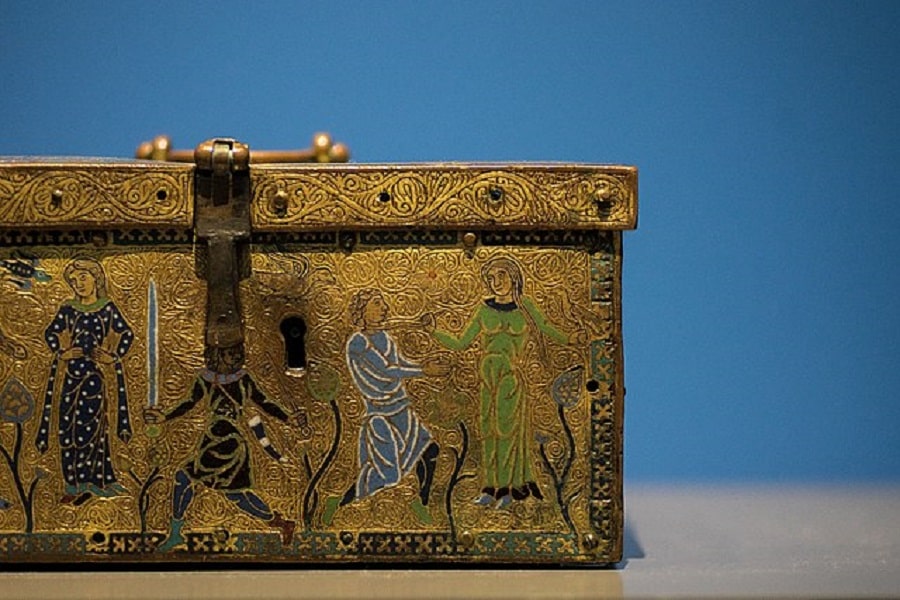
Courtly love emerged within the framework of medieval feudal society, where arranged marriages and social hierarchies prevailed. Engaging in passionate love affairs outside of marriage or pursuing individuals of higher social standing was generally considered socially inappropriate. As a result, courtly love often took place in secret to avoid scandal and maintain the reputation of those involved.
Medieval literature and troubadour poems, such as “The Art of Courtly Love” by Andreas Capellanus and various medieval romances, frequently depict courtly love as a covert or hidden affair. The lovers would exchange secret letters, meet in secluded places, or communicate through intermediaries to avoid public scrutiny.
Furthermore, historical records and cultural observations support the notion that courtly love was not openly acknowledged. The need for discretion stemmed from the potential consequences, including damage to one’s reputation, challenges to social order, or even legal ramifications. Maintaining courtly love in secret became a means of navigating the societal expectations and restrictions of the time.
However, it is worth noting that the degree of secrecy associated with courtly love could vary based on individual circumstances, regional customs, or specific literary representations. There may have been instances where courtly love relationships were known to a select few or tolerated within certain social circles. Nevertheless, secrecy was a principal element of courtly love during the medieval period.
Is Courtly Love a Literary Fiction, or Was It Practiced in Real Life?
Courtly love was both a literary convention and a phenomenon practiced in real life during the medieval period. It originated as a concept within the realm of literature and poetry, but its influence extended beyond the written word into the social and cultural practices of the time. Reliable sources confirm that courtly love was not solely a fictional construct but had real-world manifestations.
The idea of courtly love emerged in medieval troubadour poetry, particularly in Southern France, during the 12th century. Poets like Guillaume IX, Count of Poitiers, and Bernard de Ventadour popularised the concept through their lyrical compositions. These poems described the ideals of courtly love, emphasizing devotion, chivalry, and the pursuit of an unattainable beloved.
While courtly love was initially a literary convention, it significantly impacted the cultural attitudes and behaviors of aristocracy in both European history and the Western world. Courts and aristocratic circles adopted courtly love as a social phenomenon, with individuals actively practicing and emulating its principles. Historical records indicate that courtly love relationships existed, sometimes involving actual historical figures, and were considered part of the courtly culture.
While the specifics of courtly love’s practice varied across different regions and social classes, it undeniably had a tangible presence in the lives of medieval nobility. It influenced courtly etiquette, artistic expression, and even the conduct of romantic relationships. The rituals and codes associated with courtly love were integrated into the social fabric and became part of courtly life.
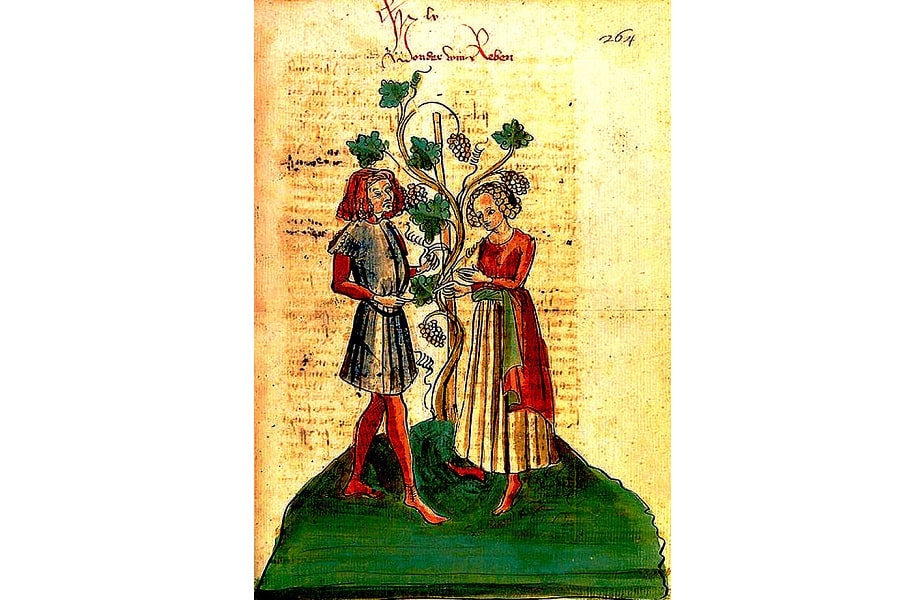
How Did Courtly Love Elevate Women’s Position in the Eyes of Society?
The Idealization of Women:
Courtly love literature often idealized European women, presenting them as paragons of virtue, beauty, and wisdom. The concept of courtly love emphasized the beloved’s superiority regarding social rank and personal qualities. This portrayal challenged the negative stereotypes of women in medieval society, which often depicted them as subordinate or inferior. The elevation of women as objects of adoration and inspiration within courtly love narratives helped counteract these stereotypes and presented a more positive image of femininity.
READ MORE: Women in European History
Influence and Agency:
Courtly love created opportunities for women to exercise influence and agency within the confines of their societal roles. Women gained power over their suitors as objects of admiration and desire, shaping the relationship dynamics. The courtly love tradition often celebrated the beloved’s ability to inspire acts of bravery, poetry, and chivalry from their admirers. By occupying this influential role, women could exercise indirect authority and impact the behavior and values of the knights and troubadours who pursued them.
Patronage and Cultural Influence:
Prominent noblewomen, such as Eleanor of Aquitaine and Marie de Champagne, played pivotal roles as patrons of troubadours and supporters of courtly love poetry. Their patronage not only provided a platform for artistic expression but also gave them agency in shaping the cultural discourse surrounding courtly love. By fostering a culture celebrating courtly love, these women could influence societal perceptions of romance, beauty, and the roles of men and women in relationships.
Social Mobility:
A humorous aspect of courtly love is the concept of “courtly cuckoldry.” In courtly love literature, it was not uncommon for the beloved’s husband or partner to be portrayed as a bumbling, clueless figure who remained unaware of the passionate affair happening right under their nose.
The husband would often be depicted as dull, old, or lacking in charm, while the knight or troubadour pursuing the beloved was portrayed as young, handsome, and desirable. This comedic trope added an amusing twist to the courtly love narratives, where the husband’s obliviousness to his wife’s affair became a source of entertainment for the audience.
Courtly love, emphasizing the beloved’s exceptional qualities, provides opportunities for women to gain social mobility and recognition beyond their assigned roles. The elevation of a woman as the object of courtly love could raise her status within the aristocratic circles, allowing her to transcend the confines of her birth or marital position. This recognition could increase respect and admiration.
The Queen of Courtly Love, Eleanor of Aquitaine
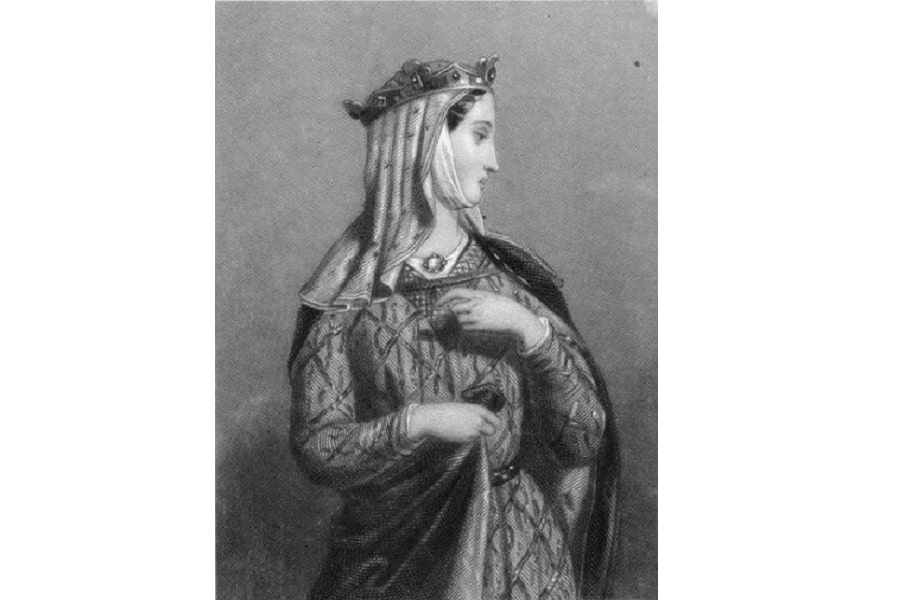
Eleanor of Aquitaine (1122-1204) was a prominent figure in medieval Europe and one of the most influential women of her time. She was the Duchess of Aquitaine in her own right, inheriting vast territories in southwestern France, making her one of Europe’s wealthiest and most powerful women.
Eleanor’s connection to the concept of courtly love stems from her role as a patron and participant in the cultural and literary movements of the time. She was known for supporting troubadours, poet-musicians, and the courtly love tradition. Troubadours composed songs and poems that celebrated the ideals of courtly love, often addressing them to noblewomen like Eleanor.
Eleanor’s court became a vibrant center of cultural and intellectual activities, fostering the development and dissemination of courtly love literature. She attracted troubadours to her court, where they would perform their compositions, showcasing the ideals of chivalry, devotion, and romantic longing associated with courtly love.
Furthermore, Eleanor’s romantic relationships and marriages influenced the courtly love narrative. Her first marriage was to Louis VII of France, and her second was to Henry II of England, who later became king. Eleanor’s relationships were marred by conflict and scandal, including rumors of extramarital affairs. These elements mirrored the themes often found in courtly love literature, such as unrequited love, forbidden passion, and pursuing an idealized beloved.
While Eleanor herself may not have been directly associated with courtly love in the sense of being the quintessential embodiment of the concept, her influence as a patron and her involvement in the cultural milieu of the time contributed to the dissemination and popularisation of courtly love ideals through the troubadour tradition and her relationships.
Conclusion
In conclusion, courtly love is a fascinating and complex cultural phenomenon that emerged during the medieval period. With its ideals of chivalry, longing, and devotion, courtly love captured the imaginations of poets, troubadours, and artists, leaving an indelible mark on literature and cultural traditions.
Throughout the centuries, courtly love has fascinated scholars and romantics alike, serving as a lens through which we can explore the intricate nuances of love, desire, and societal expectations. Its themes of unrequited love, the yearning for the unattainable, and the tension between passion and restraint resonate with audiences today.
However, it is crucial to approach courtly love with a critical eye. While it can be admired for its historical significance and the artistic masterpieces it inspired, we must also recognize its limitations and potential for perpetuating unrealistic ideals or unequal power dynamics.
Navigating the rather complex world of love and relationships in modernity can be a thought-provoking framework for further reflection and discussion.
And let’s be honest, that will make the concept of courtly love all the more interesting for all those looking back.
Whether we glorify or critique it, courtly love continues to captivate our imaginations and offers a rich tapestry for exploring the complexities of the heart; to all those who seek it.
References
Weston, Jessie L. “From Ritual to Romance.” Cambridge University Press, 2014.
Gaunt, Simon. “Love and Death in Medieval French and Occitan Courtly Literature: Martyrs to Love.” Oxford University Press, 2006.
Busby, Keith. “Courtly Love and the Origins of Romance.” In A Companion to Romance: From Classical to Contemporary, edited by Corinne Saunders, 23-34. Wiley-Blackwell, 2004.
Lewis, C.S. “The Allegory of Love: A Study in Medieval Tradition.” Oxford University Press, 2013.
Capellanus, Andreas. “The Art of Courtly Love.” Translated by John Jay Parry, Columbia University Press, 1990.
Gaunt, Simon. “Love and Death in Medieval French and Occitan Courtly Literature: Martyrs to Love.” Oxford University Press, 2006.
Lewis, C.S. “The Allegory of Love: A Study in Medieval Tradition.” Oxford University Press, 2013.
Owen-Crocker, Gale R., and Elizabeth Coatsworth. “The Cultural Construction of the British World.” Brill, 2018.
Owen-Crocker, Gale R. “Courtly Love in the Middle Ages.” The British Library, 2009.
Gaunt, Simon. “Love and Death in Medieval French and Occitan Courtly Literature: Martyrs to Love.” Oxford University Press, 2006.
Lewis, C.S. “The Allegory of Love: A Study in Medieval Tradition.” Oxford University Press, 2013.
Busby, Keith. “Courtly Love and the Origins of Romance.” In A Companion to Romance: From Classical to Contemporary, edited by Corinne Saunders, 23-34. Wiley-Blackwell, 2004.